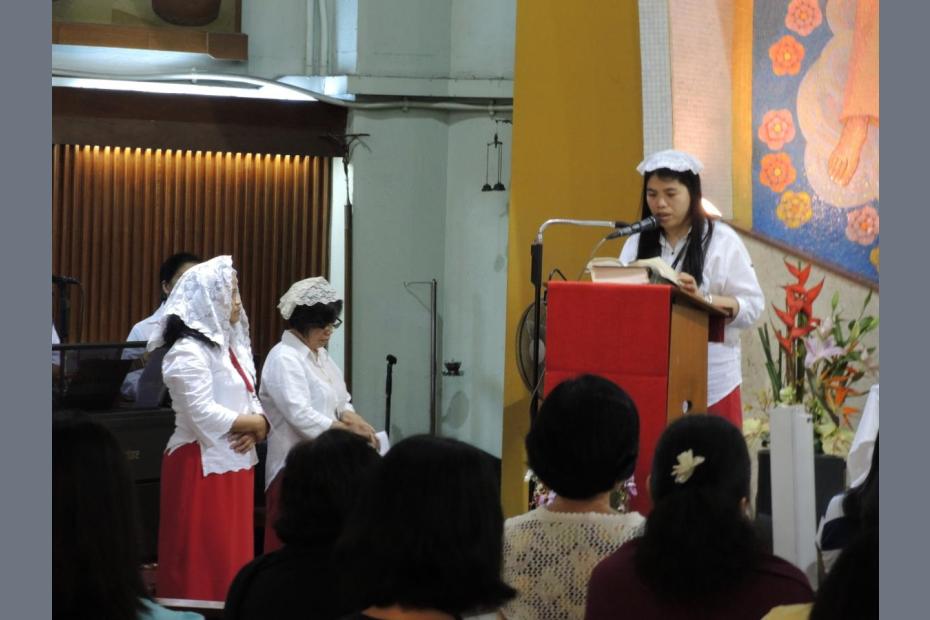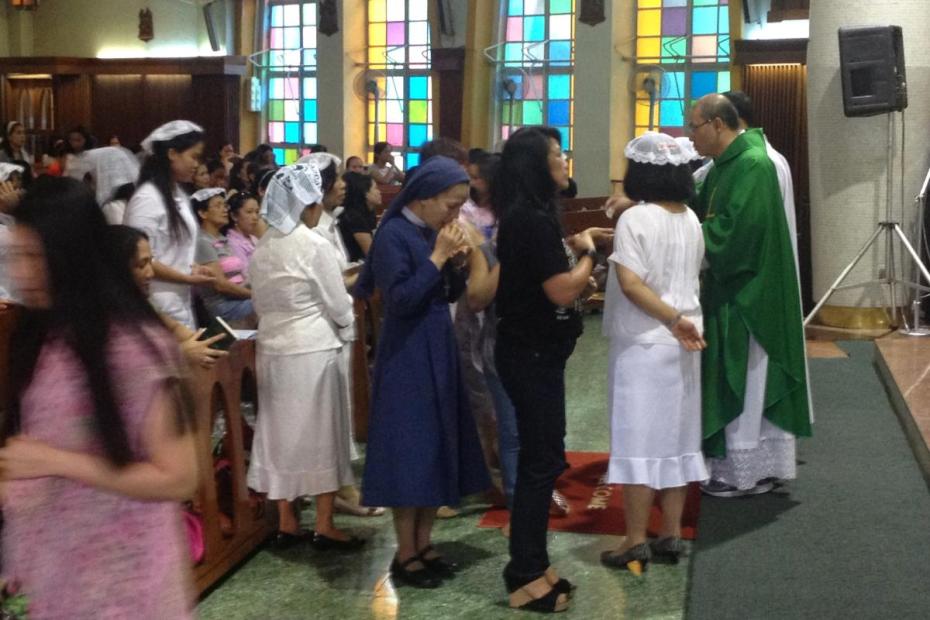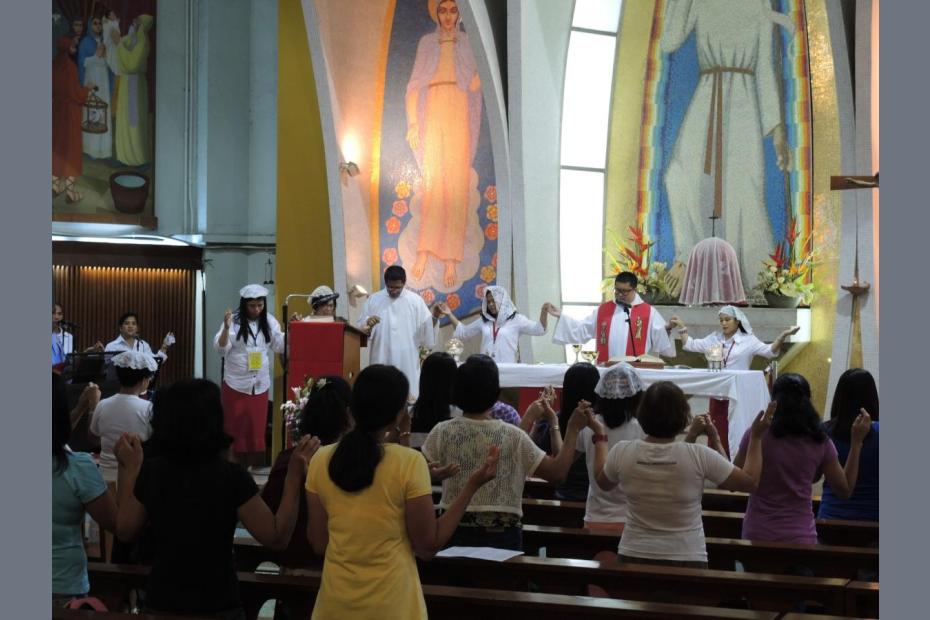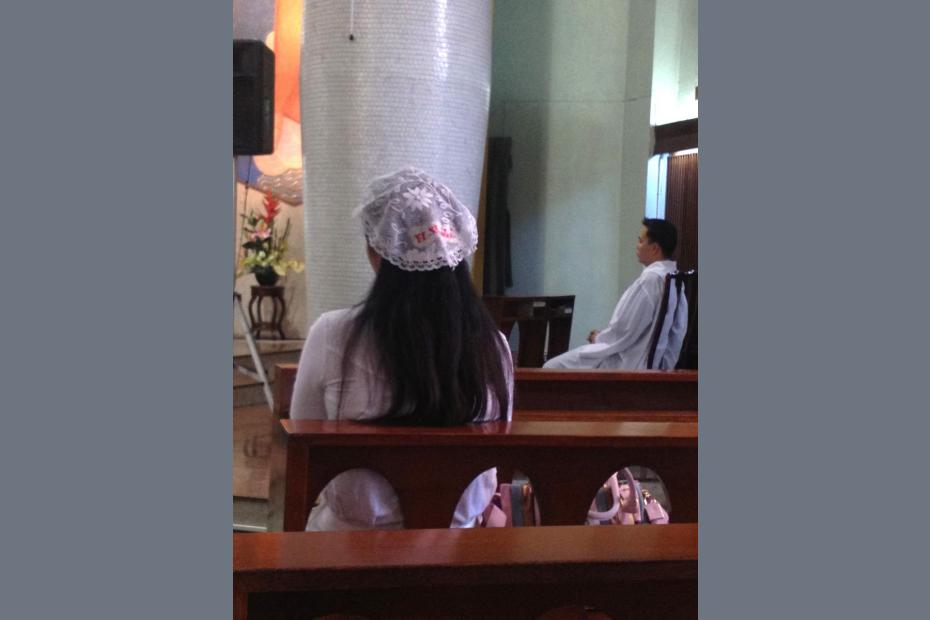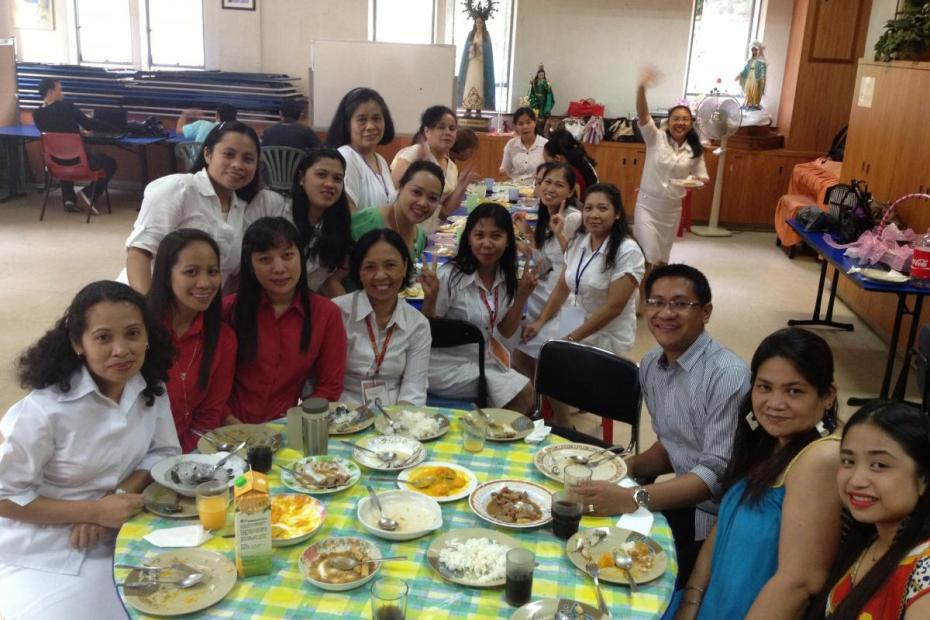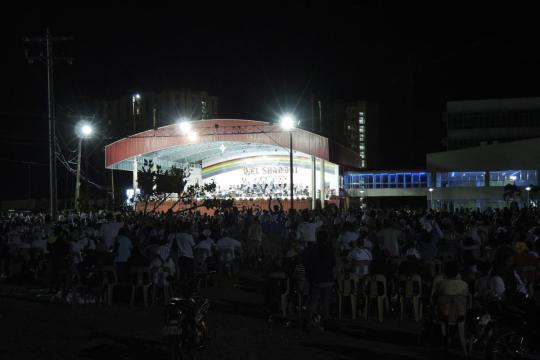Filipino Catholicism, in Hong Kong and at home, has been deeply influenced by Charismatic Catholic practice. One Filipino priest suggests that half of Filipinos in Hong Kong would probably prefer charismatic forms of worship over traditional types. The more sober quality of liturgy in Hong Kong, as an accommodation to Chinese culture, may even sharpen the need that some Filipinos feel for the kind emotional experience that Charismatic Catholic worship brings.
A number of Charismatic Catholic groups meet in Hong Kong, including El Shaddai, a Philippines-based Charismatic Catholic organization with a following in the millions.
El Shaddai meets in Hong Kong seven days a week. On weekdays, the organizations meets in parishes in Hong Kong in conjunction with the daily liturgy, after which El Shaddai members stay on for a charismatic service.
Monday prayer meeting at St. Joseph's Church in Hong Kong.
These El Shaddai groups fill an important role in the lives of the hundred or more women who show up for weekday Masses (for these women, that weekday would be the one day a week they have off). The Hong Kong group is led by a “disciple” who works full time for El Shaddai. Different disciples – all men – are brought to Hong Kong for a three-month period to lead the movement. The local leadership at the next level is composed of women “workers” whose name tags refer to them as “Sister.” There are distinct El Shaddai groups for each day of the week – whichever single day those househelp have off and are able to meet – and the workers in each group have a particular color skirt (e.g., white for Monday’s group, red for Tuesday’s). Other participants come dressed as they are. Following the Mass and service, the workers join for a lunch they have prepared in a room on the lower level of the church.
El Shaddai services include dancing, petitionary prayer, a scripture reading, and preaching that engages the congregation. Members are at times engaged in fun and laughter, and at other times cry and in distress as they reflect on life’s difficulties and their worries. The music – generally of a “pop” music genre with spiritual lyrics – elicit a range of emotions. El Shaddai gatherings stress that God is a God of healing, a God who will overcome suffering and loss.
El Shaddai Tuesday prayer meeting at St. Joseph's.
Charismatic Catholic groups help the church stem a tide of efforts by Evangelical, Pentecostal and other religious groups to recruit Catholics away. Some women do join these groups for a while, but often move back and forth. Many of the women interviewed reported that friends who helped them out subsequently invite them to other groups, which they try out for a while, or perhaps even attend occasionally still. Dedicated members of El Shaddai tithe 10% of their income to the movement.
